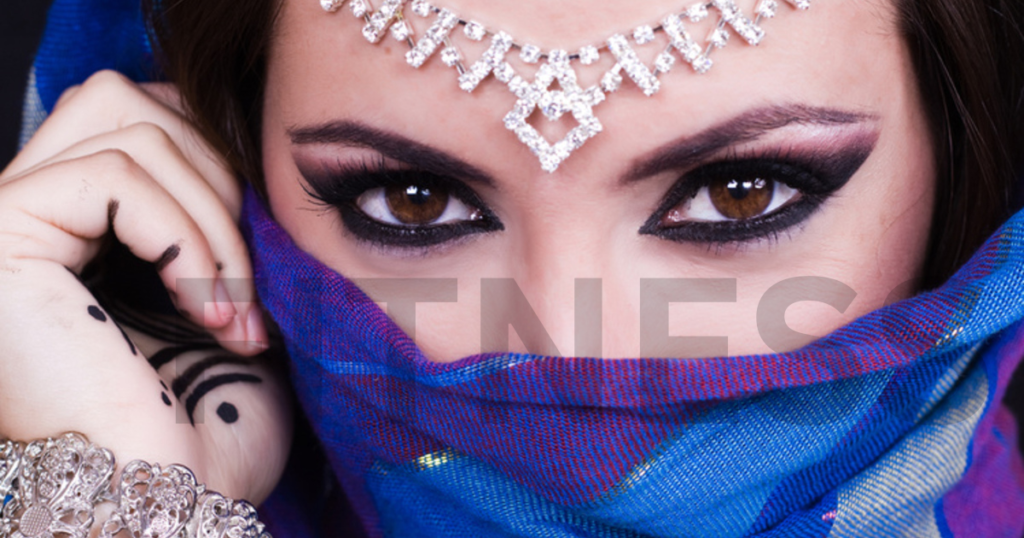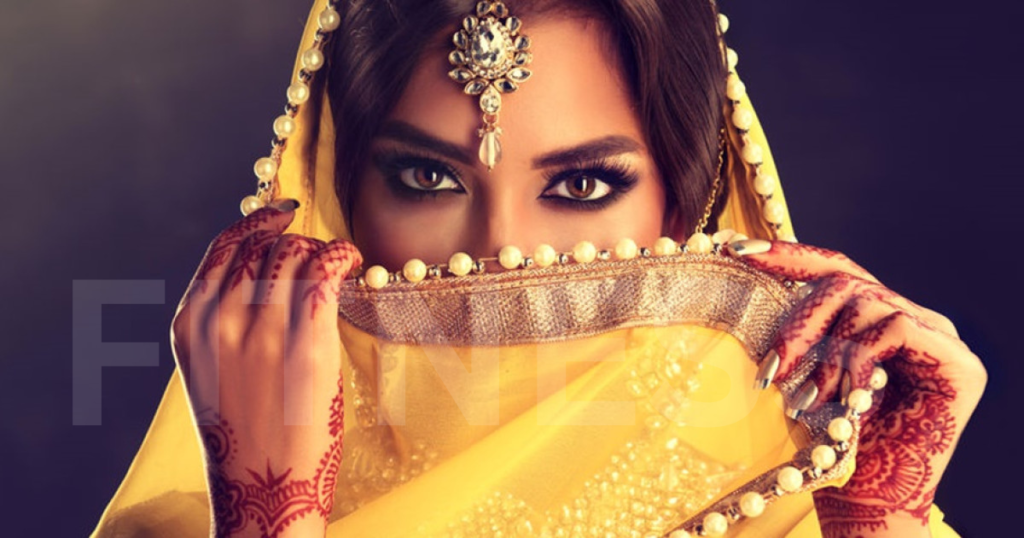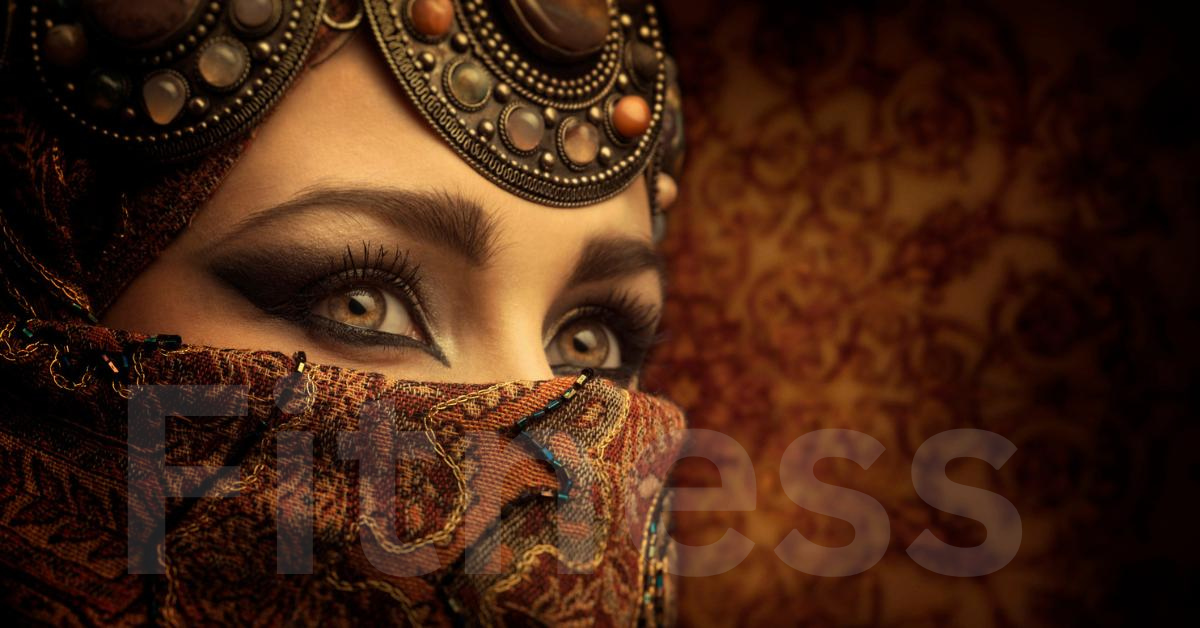A Celebration of Elegance and Tradition, The language Arabic is full of history and is very hard to learn. It opens up a world of beauty that is built into it. This part is meant to give a quick outline and make people want to learn more about the beautiful details of Arabic.
A language call Arabic is spoken by millions of people around the world. Its words hold a lot of culture and historical information. As we start this trip through languages, it’s important to remember how beautiful the Arabic language is and how
it gives us a new way to look at beauty.
In addition to being a useful language for conversation, Arabic is beautiful, and every word seems to have a lyrical meaning. This investigation is more than just a study of language;
it’s also a journey through culture that shows how the idea of beauty is deeply root in the language itself.
The Stage for Arabic Beauty Exploration
As we go on, we will look at the basics of the Arabic language,
including its alphabets, speech, and basic grammar. This knowledge is the basis for enjoying the beautiful subtleties that are hidden in Arabic language. After that, we’ll travel through different cultures and look at the beauty values in Arabic art,
the grace of writing, and the traditional ideas of beauty that are reflected in poems.
Get ready to be enchant by the Arabic words for beauty,
which range from words that describe how someone looks to words that make you think of the beauty of nature. We’ll take a look at the different types of comments
and praise in Arabic and show how respect and eloquence are easily mix in this language.
When we talk about beauty in an Islamic setting so
we’ll find that words and faith are link in a deeper way. Arabic is like a mirror that shows how beautiful Allah’s world is. It reflects the teachings of Islam so which go beyond the physical and stress inner beauty. These teachings can be seen in the art and buildings that are base on these beliefs.
We won’t just talk about ideas; we’ll also give you useful advice on
how to learn Arabic, including suggestions for books and classes and stressing how important it is to be sensitive to other cultures. The trip ends with a summary that encourages
you to learn more about the fascinating world of Arabic phrases.
So, buckle up for this journey through language. Arabic is more than just a language; it’s an art form with a beauty that’s just ready to be found. So let’s start this journey through “Arabic for Beautiful.”
Understanding Arabic Language
Overview of Arabic Language
Millions of people in the Middle East so North Africa,
and other places speak Arabic, a Semitic language with a long past. It is important beyond its own area, which makes it one of the most spoken languages in the world. The Arabic script so which is written from right to left so
gives the language a unique look that makes it stand out from others.
Arabic is a root-based language so which means that words share a similar root made up of sounds. Vowels and prefixes and endings are add to give words different meanings. This unique quality adds to the complexity of the language and makes it possible for complex jokes.
Importance of Learning Arabic
Arabic is more than just a language; it’s a way to understand a
world that is very different and full of different cultures. The Quran so which is the holy book of Islam, is written in Arabic. There are more than 1.8 billion Muslims in the world. This alone shows how sacred it is and makes it a useful
language for people who want to learn about Islam.
Arabic is also the key to the huge literary and philosophical riches of the Arab world. Learning Arabic opens up a world of books, from ancient works to modern ones. It also helps you understand the past and society of the Arabic-speaking peoples better.
Understanding other countries better is more important than ever in today’s international world. Knowing Arabic can help you do that. It makes it easier to talk to millions of people and lets people do business, build relationships and share cultures.
As we go through the next few parts on the Arabic language so
remember that this isn’t just about learning a bunch of words; it’s about becoming immersed in a language and culture that shows you the deep beauty in every expression. There are more spiritual reasons than practical ones to learn Arabic, which makes the trip well worth taking.
Foundations of Arabic Language
Alphabets and Pronunciation
One thing that makes Arabic unique is its writing, which is an art form in and of itself. It is written from right to left and has 28 letters. This adds a visual and aesthetic layer to conversation. The smooth and flowing look of Arabic calligraphy comes
from the fact that each letter has a different shape based on where it is in a word.
When you speak Arabic so you use sounds that aren’t found in many other languages. The guttural sounds, which are shown by letters like “qaf” and “any” give the spoken language a unique sound. For better connection and a better understanding of the vocal details of Arabic, it is important to use correct speech.
Basic Grammar and Syntax
Arabic language is based on a system of trilateral stems,
which means that words share a root that has three consonants. To understand how words are put together and what they mean, you need to know these roots. The freedom and depth of the language are shown by the many words
that can be made by adding prefixes and suffixes to these roots.
Like English so Arabic phrases are made up of a Subject or Verb and Object (SVO) so but the order of the words is more flexible. To master basic grammar so
you need to learn about verb conjugations so noun cases and how to use particles to give words more than one meaning. This variety in structure makes it possible to describe oneself beautifully so picking up on subtleties that might be hard to do in other languages.
Key Phrases for Everyday Communication
To fully understand the beauty of the Arabic language so one must learn how to use it in real life. Learning daily words is a good way to start communicating with
native Arabic speakers and interacting with people who speak Arabic as their first language.
As-salamu alaykum is a friendly way to meet someone and “Shukar” is a way to show thanks. These words not only make contact easier so but they also show how Arabic culture shapes language use. In this part so we’ll talk about important terms that will help students not only understand how to use the language but also appreciate
the cultural details that make learning Arabic a truly enjoyable experience.
As we learn the basics of the Arabic language so keep in mind that every letter so word and phrase is part of a beautiful expression symphony. What is said is beautiful so but how it is said is even more beautiful. We will go into more detail about Arabic’s beautiful aspects in the parts that follow so building on what we speak about here.
Looking into what makes art so calligraphy and poetry beautiful in Arabic culture.
Aesthetic Values in Arabic Art
Arabic art shows a deep respect for beauty through its complex geometric shapes and bright colors. If you look at traditional crafts so pottery or modern works so you’ll see that Arabic art loves order and accuracy. History so culture and faith are all woven into the stories of each piece.
Arabesque is a beautiful mix of flower and geometric patterns that is common in Arabic art. This fancy style not only looks beautiful, but it also represents
how everything is link so highlighting the beauty in both sameness and difference.
Beauty in Arabic Calligraphy
The art form of Arabic calligraphy takes writing to a higher level by making it look like poetry. With its smooth shapes and fine details so Arabic writing turns words into works of art. People who do calligraphy are artists in their own right
and they are very good at finding the right mix between tradition and new ideas to make pieces that are truly beautiful.
The written word is very important in Arabic society and calligraphy connects what is spoken and what is seen. Each stroke has meaning so combining form and meaning in a way that works well.
Traditional Concepts of Beauty in Arabic Poetry
With its long history so Arabic verse is full of beauty and elegance. Poetry so from pre-Islamic odes to modern writing is a strong way to show how you feel so
capture the beauty of nature, and dig deep into the human experience.
In traditional Arabic poems, ideas of beauty often go beyond the physical and into love so faith and the sublime. The rhythmic quality of the language makes poetry more enjoyable by making a beautiful musical expression that touches people’s hearts.
In this part, we dive into the artistic so calligraphic
and literary aspects of Arabic to learn about how beauty is express in different cultures. As we learn more about these aspects, it becomes clear that Arabic society values beauty not only as an aesthetic thing, but also as a way to share deep feelings and stories. The timeless link between language so culture and the human spirit can be seen in the beauty of Arabic art or writing and poems.

Expressions for Beauty in Arabic
Vocabulary for Describing Physical Beauty
Arabic has a very large vocabulary that makes it easy to describe the subtleties of beauty. From the classy word “Jameel” for pretty to the detailed word “husna” for good-looking,
the language has a wide range of words that describe more than just the surface, getting into the details of facial features, attitudes, and general appeal.
This part will walk students through a carefully chosen set of words
that will help them talk about and respect physical beauty with accuracy. Language reflects national values, so understanding how Arabic describes beauty can help you understand how people in that society think about beauty.
Adjectives for Expressing Beauty in Nature
Arabic is beautiful not only in the way people speak it, but also in the way nature looks. Arabic has a lot of words that describe the beauty of nature because
it is a language that has deep roots in nature. Every word in Arabic, from “Jamil” for a grand scenery to “Lateef” for a gentle beauty, paints a clear picture of the natural wonders that are important to the culture.
By exploring these words, you can not only improve
your speaking skills but also feel more connected to the world around you. In a way that fits with Arabic poetry practices, it encourages students to see and talk about the beauty of scenery, seasons, and other things.
Compliments and Praises in Arabic
In Arabic, compliments and praise are an art form that shows how important it is to be polite. If you want to compliment someone on their personality,
looks, or accomplishments, the language has a lot of options that are sincere and friendly.
From the general “Masha ‘Allah” to specific praises like “Ante Jamila” for “You are beautiful” and “Maybrook” for “Congratulations,”
this part teaches students how to give compliments in Arabic in a way that fits with social norms. What makes these statements real and emotional is not just the words, but also the cultural details that go along with them.
As we look at Arabic words for beauty, keep in mind that language is a way to learn about society. Every word and term has more than one meaning. It also has a cultural meaning that shows what the person speaking it believes and values. By learning how to say beautiful things in Arabic, students not only improve their language skills,
but they also learn more about the culture that is woven into the language.
Beauty in Islamic Context
Beauty as a Reflection of Allah’s Creation
In Islamic thought, beauty is closely connect to the idea that God made everything. Arabic, which is the language of the Quran, represents
the idea that everything in the world shows how beautiful Allah is. From the tiny details of a flower to the vastness of the universe, Arabic is a way to enjoy and thank God for the beauty in the world.
In this part, we’ll look at how the language Arabic expresses
the awe and respect that Muslims feel for the natural beauty around them. When you look at beauty in this way, you get closer to both the language and
the spiritual meanings that are hidden in it.
The Concept of Inner Beauty in Islamic Teachings
Arabic, which has its roots in Islamic culture, gives people ways to show and understand their inner beauty. In Islamic beliefs, traits like compassion, humility and kindness are emphasize because they are seen as signs of inner beauty. Because Arabic has so many complex words, it helps people talk about and value these qualities.
This part takes students through the language
world of inner beauty by looking at words and sentences that show faith and character depth. By doing this, students not only improve their language skills,
but they also learn more about the moral and social lessons in Islam.
Beauty in Islamic Art and Architecture
Arabic is used to show beauty in more than just words. It is also use in art and architecture. Through its complex geometric patterns and arabesque designs, Islamic art shows how the society values beauty. Through writing and signs, the Arabic language becomes an important part of these forms of art, combining language and art.
Islamic building, which is known for its grandeur and balance, also shows how people see beauty in divine order. As we go through this part, students will see how the Arabic language is connect to Islamic art and building,
giving them a more complete view of beauty than just looking at it.
By looking into the Islamic view of beauty, language
trainees not only improve their spoken and written skills, but they also learn a lot about the spiritual and cultural aspects of Arabic. Arabic stops being just a way to talk to people; it starts being a way to show thanks, inner ideals, and the stunning beauty that people think is a mirror of God.
Learning Resources for Arabic
Recommended Books and Texts
When people want to start learning Arabic, they need reliable tools to help them through the language’s complexities. This part has a carefully chosen list of suggested books and papers for different levels of competence. From easy-to-understand books that teach you the Arabic writing to in-depth books that show you how rich Arabic literature is, these are the tools you can’t do without on your way to becoming fluent in the language.
“Alf Baa” is a great book for newbies, “Arabic Between Your Hands” is great for intermediate learners, and “One Thousand and One Nights” is great for people who want to read something challenging. By using these tools, students not only improve their language skills, but they also learn more about the literature and cultural aspects of Arabic.
Online Courses and Tutorials
Online classes and lessons make it easy and open to learn Arabic in this day and age. This part talks about trustworthy websites that offer organized lessons, fun training, and interactive exercises. You can learn a language at your own pace and in
the way that works best for you using platforms like Duolingo and Rosetta Stone or taking classes on platforms like Coursera and Udemy.
Learners can choose the best online tools by reading detailed information about course designs, engaging parts, and user reviews. Multimedia features, like video lessons and live quizzes, make sure that the learning experience is dynamic and interesting.
Language Exchange and Immersion Opportunities
Besides books and the internet, the best way to learn a language is to connect with people in real life. This part talks about language exchange programs
and training chances that make it easier to use your Arabic language skills in real life. You can talk to native speakers on platforms like Tandem, Hello Talk, and at local language exchange meetups. This will help you improve your speaking skills and cultural awareness.
Language training classes in Arabic-speaking countries offer a full culture and linguistic experience for people who want to go deeper. Learners can immerse themselves in the language by going on study abroad programs, going to language schools, or volunteering. This will speed up their progress and give them a better understanding of Arabic society.
As students look through the many tools available, this part acts as a map, showing them the best and most fun ways to learn Arabic. There are many tools for learning a language, from basic books to engaging online classes and living in a language-speaking country. This means that students can make their language learning fit their needs and goals.
Setting realistic goals for learning Arabic, using language apps and technology, and being sensitive to and aware of other cultures are all useful tips for learning Arabic.
Setting Realistic Language Learning Goals
Attainable goals is the first step to learning Arabic well. This part gives you useful tips on how to set reasonable goals for learning a language. Learners are told to break down their goals into doable steps, whether they want to become fluent in speech,
master the Arabic writing, or read great literature.
Language learners can keep track of their progress and stay encouraged by setting SMART goals, which are goals that are clear, measured,
attainable, relevant, and have a due date. This part talks about how to make goals fit the hobbies and needs of each person so that they can enjoy their Arabic language journey.
Utilizing Language Apps and Technology
There are so many apps and other tech tools available now that learning a language has changed a lot. This part introduces students to a number of language apps that are meant to help them learn Arabic. Sites like Memories, Babel, and Lingo deer offer classes that you can interact with, tasks that help you learn new words, and practice pronouncing words.
The experience of learning is also improve by using technology like speech recognition software, language sharing apps, and online language groups. This part gives you useful advice on how to use these tools in your daily life so that learning a language is easy and fun.

Cultural Sensitivity and Awareness
Arabic is more than just a language; it’s a rich cultural fabric. This part talks about how important it is to be sensitive to and aware of other cultures when learning Arabic. Cultural details, habits, and customs help people communicate better and feel more connected to the language.
Arabic language learners are told to read Arabic books, watch Arabic movies, and listen to Arabic music to learn more about the culture that shapes the language. By learning about Arab welcomes, traditions, and phrases, you can be sure that your language is used correctly and with respect. This section helps you understand Arabic in a way that goes beyond its language parts by explaining the culture aspects.
By using the useful tips in this part, students not only improve their language skills but also learn to approach Arabic with more cultural awareness and awareness. The trip isn’t just an opportunity to learn Arabic words; it’s also a life-changing event that helps people connect, understand, and appreciate the beauty of the Arabic language and culture.
Conclusion
Recap of Key Concepts
Now that we’ve finished learning “Arabic for Beautiful,” let’s think about the main ideas that have come up during this language and culture trip. First, we learned the basics of the Arabic language, including how to use the alphabet, how to pronounce words, and basic spelling. This knowledge gave me a strong foundation for enjoying the beautiful things in Arabic culture, from the intricate details of art and writing to the deep beauty in poems.
It was found that Arabic words for beauty, whether they’re talking about physical traits or the beauty of nature, are hidden gems that go beyond words. The Islamic background helped us understand even better by showing us how Arabic can be use to thank Allah for making the world and to talk about inner beauty.
We also looked at practical issues, showing students how to find useful materials, online classes, and chances to speak and use the language with others. It was emphasize how important it is to set attainable language learning goals, use language apps, and promote cultural awareness as important parts of a complete language learning path.
Encouragement for Further Exploration
When you, the student, get to this point, don’t see it as the end, but as a way to keep going and find out more. There is so much beauty in Arabic that you have only begun to scratch the surface. Read the suggested books more deeply, pay attention to online classes, and take advantage of chances to trade languages. Let the depth of Arabic language and society continue to show itself to you.
Keep making language learning goals that you can reach, using technology to help you, and being sensitive to other cultures as you learn Arabic. Keep in mind that learning a language is not a straight line; it is an ongoing process that changes over time. No matter how small your accomplishments are, be proud of them, and use problems as opportunities to get better.
In “Arabic for Beautiful,” every word, phrase, and cultural reference is like a paintbrush that you can use to paint your world. Let your trip through the Arabic language be a creation that shows not only how well you can speak Arabic but also how much you appreciate its beauty.
As you go forward, know that the beauty of Arabic is waiting for you, whether your goal is to become fluent, learn more about other cultures, or just learn for fun. It is a language that not only speaks beautiful things, but also encourages you to represent those things in your writing. May your study of “Arabic for Beautiful” give you ideas, help you connect with others, and lead you to endless new discoveries.
FAQs (Frequently Asked Questions)
Why should I learn Arabic.
Learning Arabic gives you access to a rich cultural history, including Islamic writing and thought. It also makes it easier to understand people from other cultures in today’s international world. It’s more than just a language; it’s a way to show yourself in a wide range of interesting ways.
How can I start learning Arabic.
Start by learning the basics of the language, like the alphabet, how to say words, and simple grammar. Look into the language apps, books, and online classes that people have suggested. Important steps include making goals that are attainable, using technology, and becoming immersed in the culture through movies, books, and music.
What makes Arabic expressions for beauty unique.
There are a lot of complex words in Arabic that can be use to talk about beauty, nature, and admiration. The language not only expresses the beauty of the outside world, but also the deep beauty found in Islamic beliefs, art, and building.
How can I engage with native Arabic speakers for practice.
Platforms for language sharing, such as Tandem and Hello Talk, pair language trainees with expert speakers. If you want to use your language skills in real life, you could join a local language exchange group or do an intensive experience in an Arabic-speaking country.
Are there recommended resources for a deeper exploration of Arabic culture.
Yes, the piece offers a variety of readings, from old books to new ones, for people who want to learn more about the cultural aspects of Arabic. It suggests watching movies, listening to music, and reading books to get a fuller picture.


